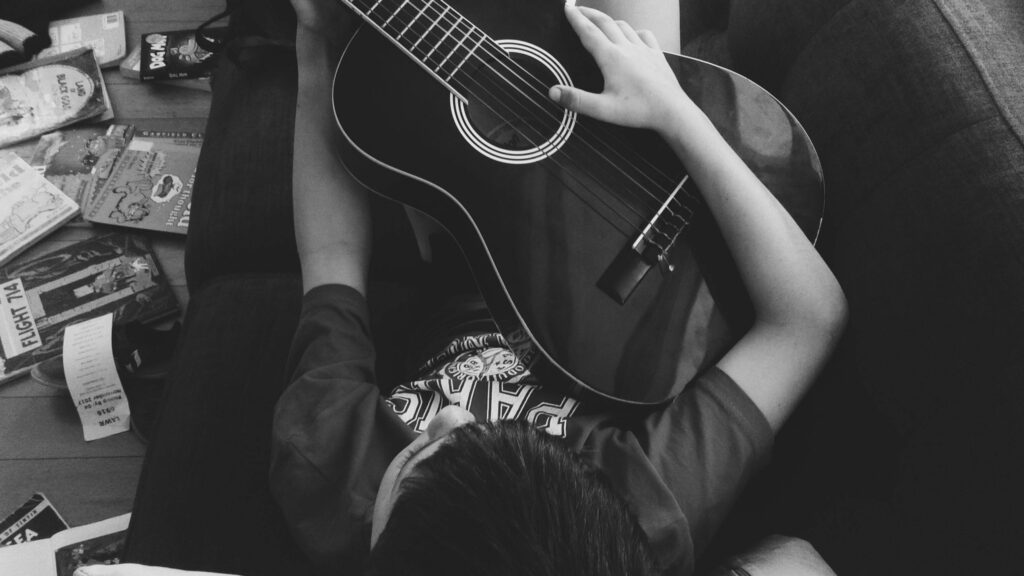Introduction
Whether you’re practicing scales at dawn, improvising on stage, or composing late into the night, mindfulness for musicians can be your secret weapon. By tuning into your breath, sensations, and emotions, you deepen your connection to your instrument and audience—boosting precision, expression, and stage presence.
Yet, ironically, mindfulness for musicians can occasionally yank you out of your creative “zone,” making every hesitation or stray note feel magnified. In this post, we’ll explore both sides of weaving mindfulness into musical life: the ways it can sharpen your artistry and the ways it can feel counterintuitive mid-riff. You’ll discover practical exercises, real-life musician stories, 4–6 deep-dive subheadings, a Q&A, an FAQ, and a friendly closing to help you play—and live—with presence, resilience, and joy.
1. Why Mindfulness for Musicians Matters

Playing music at a high level demands intense focus, emotional authenticity, and physical coordination. Mindfulness for musicians means paying nonjudgmental attention to:
- Internal Dialogue: Noting self-criticism (“I missed that note”) without judgment.
- Bodily Sensations: Sensing tension in shoulders, jaw, or fingertips as you play.
- Emotional Currents: Feeling excitement or stage fright, then choosing to observe rather than react.
By noticing these signals, you can prevent performance anxiety from spiraling, reduce repetitive-strain injuries, and unlock deeper expressiveness.
2. The Bright Side: Precision, Presence, and Emotional Depth
- Sharper Technique: A brief breath-pause before a difficult passage allows you to approach it calmly, often nailing riffs you’d previously stumble through.
- Expressive Nuance: Mindful listening to your own tone—its warmth, brightness, or edge—helps you shape phrasing that truly moves listeners.
- Stage Resilience: By labeling nerves (“I notice excitement and slight tremor”), you transform adrenaline into dynamic energy rather than paralyzing fear.
Real-Life Example: Saxophonist Maya credits a simple “one-breath before solos” ritual for transforming her club gigs—she went from trembling on fast runs to delivering confident, soulful improvisations.
3. The Dark Side: Interrupting Your Creative Flow

Despite its benefits, mindfulness for musicians can sometimes…
- Disrupt Flow State: Pausing mid-improv to note your thoughts can stall the spontaneous creativity that fueled your best runs.
- Heighten Self-Criticism: Hyper-awareness might magnify every slip—a finger misplacement or pitch wobble—leading to overthinking rather than playfulness.
- Clash with Ensemble Timing: In group settings, a micro-pause can throw off tight rhythmic interplay or interrupt a conductor’s cue.
Balance is key: adapt mindfulness so it enhances rather than hinders your musical flow.
4. Practical Mindfulness Techniques for Musicians

4.1 The “Pre-Solo Breath” Reset
Before launching into a solo or tricky passage, inhale slowly for four counts, exhale for four counts—letting your shoulders drop. This micro-pause centers you for the moment ahead.
4.2 Body Scan During Practice
While tuning or changing string sets, close your eyes and scan from scalp to toes—notice tight jaw, locked knees, tense hands—and consciously release those areas to prevent strain.
4.3 The Role of Mindfulness for Musicians in Performance
When playing live, a minute before stepping onstage, focus fully on ambient sensations: the feel of the instrument, the venue’s acoustics, the hush of the audience. Grounded awareness translates into confident presence under the spotlight.
4.4 Sensory Anchoring in Rehearsals
Between takes, pick one sense—sound of your metronome, texture of your bow, taste of your breath—and devote ten seconds to noticing it. This keeps your mind out of autopilot and into engaged practice.
4.5 Gratitude Reflection Post-Gig
After a performance or practice session, take a moment to note three things you appreciated—warm applause, a supportive bandmate, or the glow of stage lights. This balances critique with encouragement.
5. Integrating Mindfulness into Your Musical Life
Embedding mindfulness needn’t overhaul your routine. Anchor micro-practices to habitual musical actions—before tuning, after a run-through, or waiting for soundcheck. Use small cues—a sticker on your music stand, a note on your tablet, or a timer on your pedalboard—to prompt mindful moments. Over time, these pauses become as natural as drawing breath, enhancing both your craft and your well-being.
If you want to know how to always stay focused as a Blogger, Click here to find out.
6. Long-Form Perspective: The Mindful Musician’s Journey
Mastery in music is a lifelong pursuit. Early in your career, you chased technical perfection—hours on end practicing scales, arpeggios, and tricky passages. Yet technique alone cannot move an audience or sustain passion. Mindfulness for musicians invites you to inhabit each note fully, transforming practice from a mechanical drill into a rich exploration of sound and self.
Picture this: you arrive at rehearsal with a short intention—“Today, I’ll listen fully and play with openness.” You start with a tuning breath, releasing external worries. As the ensemble begins, you notice dynamics, timbre, and ensemble breathing—breathing together as one organism. During solos, you anchor to your breath, turning nerves into expressive nuance. And after the last chord fades, you close your eyes in gratitude, recalling vivid sonic moments that stirred your heart. Over months and years, this mindful approach shapes not only your skill but your identity as an artist—resilient, present, and deeply connected to every listener you meet.
If you are a gamer and want to increase your focus towards games. Then, click here.
If you want to know more about the musician’s journey, read the blog about venessa cornett’s interview Here.
Q&A Section
- Q: How often should I practice mindfulness while playing?
A: Micro-practices before difficult passages, between practice blocks, and pre- and post-performance—totaling 5–7 pauses per session. - Q: Will pausing for mindfulness kill my creative spontaneity?
A: Short pauses (under 10 seconds) actually sharpen focus and can deepen improvisation by clearing mental clutter, not stalling it. - Q: Can mindfulness reduce performance anxiety?
A: Yes—observing nerves as passing sensations prevents them from hijacking your confidence onstage. - Q: What if focusing on sensations makes me more self-critical?
A: Balance internal awareness with loving-kindness: label thoughts gently (“I notice self-doubt”), then redirect to breath or music. - Q: Do I need an app or coach to learn these techniques?
A: No—most micro-practices are self-guided. Apps or a short mindfulness workshop can help beginners but aren’t mandatory.
FAQ Section
- Do I need special equipment for mindfulness?
No—just your instrument and mindful intention. A metronome or simple timer suffices for prompts. - How long until I notice benefits?
Some clarity appears immediately; sustained mastery, reduced anxiety, and deeper expressiveness often emerge within 2–4 weeks. - Can group mindfulness improve ensemble playing?
Absolutely—shared pauses before rehearsals or performances align focus, fostering tighter, more cohesive interplay. - Will mindfulness help with physical injuries?
Micro body scans can catch tension early, prompting timely stretches that prevent repetitive-strain injuries. - What if I forget to practice mindfulness?
Use gentle reminders—stand stickers, metronome cues—and be kind to yourself; consistency is more important than perfection.
Friendly Closing Message
Music is a living art that thrives on presence, emotion, and connection. Mindfulness for musicians isn’t about slowing the beat; it’s about deepening every note, breath, and heartbeat you bring to your craft. By weaving brief, practical mindful moments into your practice and performance—whether a Pre-Solo Breath, a micro body scan, or a post-gig gratitude pause—you’ll cultivate technical precision, emotional authenticity, and sustainable joy in playing. Give one technique a try in your next rehearsal, and watch how presence transforms your music—and your life—from good to unforgettable. Happy playing, and even happier breathing!

Pingback: Mindfulness for Commuters: How It Turns Traffic Stress into Calm (Yet Sometimes Feels Like Another Chore) - Calm Within Minutes
Pingback: Mindful Self-Compassion for Caregivers: How Small Acts of Kindness to Yourself Prevent Burnout - Calm Within Minutes